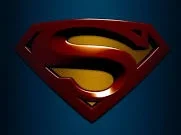July 27, 2006
OCCASIONALLY, according to tradition, Chinese history reaches a turning point, the Heavens show their displeasure and dynasties are overthrown in a spasm of celestial violence. Earthquakes, volcanoes, floods and pestilence descend on the kingdom. Licentiousness and a lack of morality on the part of the ancien regime have shattered the heavenly mandate on which the emperor's legitimacy rests, and Earth is plunged into chaos. Only the new, divinely-favoured Emperor can resolve the catastrophe.
It is thirty years since a devastating earthquake hit Tangshan in Hebei Province. The official death toll stands, according to official figures, at 242,000 people, and 7,200 families were completely wiped out. Some put the death toll far higher at about 650,000, twice the amount thought to have been killed by the southeast Asian tsunami at the end of 2004. Meanwhile, over 200 bridges and 280 kilometres of road were destroyed, and 3.5 million square metres of buildings collapsed in an unimagined, unforecast cataclysm felt as far away as Inner Mongolia.
The gerry-built concrete tenements stood no chance under an onslaught that was the equivalent of 800 tons of TNT. Some only survived because they lived in older and ostensibly more fragile wooden houses that did far less damage. Astonishingly, five coal miners working underground when the quake struck managed to hold out for fifteen days before finally being rescued, miraculously insulated from the lethal aftershocks.
The Tangshan earthquake was the last significant event in the long and convulsive reign of Chairman Mao Zedong, who died just over a month later, and came only a few days after Premier Zhou Enlai succumbed to cancer. The disaster, many superstitious observers said, marked the fall of a dynasty.
According to some historians, Mao, in his senile twilight, was not even aware that the Tangshan Earthquake had taken place. His doctor, Li Zhisui, claims otherwise, and as the convulsions struck Beijing and turned the sky red, the critically ill and incapacitated Chairman, still trying to recover from two heart attacks, was moved to a safer building in Zhongnanhai. Whether he was aware of the earthquake or not, the relief efforts still bore all the hallmarks of his faltering regime.
Disaster relief was hampered by the new rounds of political persecution led by the Gang of Four, and the earthquake had become part of the battle to succeed Mao. The Gang's propagandist, Yao Wenyuan, tasteless to the last, exulted in the revolutionary opportunities afforded by the calamity in an article published in Shanghai. As rescue work got underway, the Gang of Four restricted all news about the earthquake in order to concentrate on the smearing of reformers led by the resurgent Deng Xiaoping. Meanwhile, rescuers on the ground were urged to "study Chairman Mao" and "take class struggle as the key link" in the relief effort. A preposterous editorial in The People's Daily said that it was "necessary to take the criticism of the Deng Xiaoping counterrevolutionary line as the motive force" behind rescue and relief operations.
Later, after another earthquake struck Songpan in Sichuan on August 16, the Gang accused provincial leader Zhao Ziyang of using the earthquake to distract attention from the political struggle against him. Hua Guofeng's short-lived rise to become the chairman of the Chinese Communist Party was based in part on his tours of the stricken Tangshan.
Things have changed, of course, but the responses in the media have been predictable. State TV has been telling inspiring stories about the rescue efforts, as well as maudlin interviews with some of the survivors. They have also taken pains to mention the complete transformation of the city of Tangshan, now a thriving industrial metropolis with a population of 7 million, in the years following the earthquake. If the earthquake really was the end of a dynasty, the city deserved more than most to take advantage.





